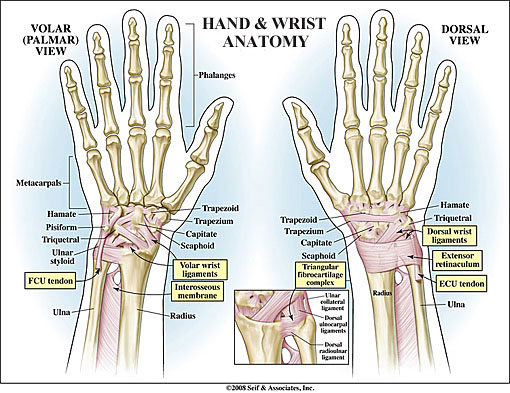Wrist tendonitis, a condition characterized by the inflammation of tendons in the wrist, can significantly impede one’s ability to perform daily tasks, let alone engage in activities that require wrist mobility and strength. The tendons, which connect muscles to bones, facilitate movement by transmitting the forces generated by muscle contraction. When these tendons become inflamed, the resultant pain and stiffness can be debilitating. Understanding the causes, symptoms, and treatments of wrist tendonitis is crucial for managing the condition effectively.
Causes of Wrist Tendonitis
Wrist tendonitis can arise from a variety of causes, including repetitive motion, sudden injury, orCertain medical conditions. Repetitive strain injuries are common among individuals who frequently use their wrists in a similar motion, such as computer users, musicians, and athletes. The repetitive motion can lead to micro-tears in the tendon, initiating an inflammatory response. Direct blows to the wrist or sudden, forceful wrist movements can also cause tendonitis. Furthermore, conditions like rheumatoid arthritis, which affect the joints, can increase the risk of developing tendonitis.
Symptoms of Wrist Tendonitis
The symptoms of wrist tendonitis are generally straightforward, although they can vary in severity. Pain, especially during movement of the wrist, is a primary symptom. This pain can be sharp and stabbing or a dull ache, depending on the extent of the inflammation. Swelling around the affected tendon and stiffness in the wrist joint are also common. In some cases, individuals might experience a snapping or catching sensation as the affected tendon moves. Activities that previously were effortless may now require considerable effort and cause discomfort.
Treatment Options for Wrist Tendonitis
Fortunately, wrist tendonitis can often be managed with conservative treatments, reserving surgical interventions for severe cases where other treatments have failed. The primary goals of treatment are to reduce inflammation, alleviate pain, and restore function.
Rest, Ice, Compression, Elevation (RICE): The RICE principle is often the first line of treatment. Giving the wrist adequate rest to avoid exacerbating the injury, applying ice to reduce inflammation, using a compression bandage to help reduce swelling, and keeping the wrist elevated above the level of the heart can significantly reduce symptoms.
Physical Therapy: A physical therapist can provide exercises tailored to improve wrist mobility and strength without overloading the tendons. These exercises can help in the rehabilitation process, ensuring that the wrist regains its full range of motion and functionality.
Pain Management: Over-the-counter pain relievers such as ibuprofen or naproxen can help manage pain and reduce inflammation. In some cases, a doctor might prescribe stronger pain medication or corticosteroid injections to reduce inflammation.
Bracing: Using a wrist splint can help immobilize the wrist, providing the tendons time to heal. This is particularly useful during the initial stages of treatment or for individuals whose jobs or activities cannot be avoided.
Ergonomic Adjustments: Making ergonomic adjustments to one’s workspace or playing technique can prevent further strain. For example, ensuring that the computer mouse and keyboard are at comfortable heights and taking regular breaks to stretch can prevent repetitive strain.
Advanced Treatments
In cases where conservative treatments do not provide relief, advanced treatments might be considered. These include:
- Platelet-rich Plasma (PRP) Therapy: PRP involves injecting platelet-rich plasma (derived from the patient’s blood) into the affected area to stimulate healing.
- Surgery: In severe cases, surgical intervention might be necessary to repair damaged tendons.
Prevention of Wrist Tendonitis
Preventing wrist tendonitis involves taking proactive measures to reduce the risk of tendon strain. This includes maintaining good posture, taking regular breaks during activities that involve repetitive wrist motions, performing stretching exercises for the wrist, and ensuring that equipment and workspace are ergonomically designed to minimize strain.
Frequently Asked Questions
What are the early signs of wrist tendonitis?
+The early signs of wrist tendonitis typically include pain in the wrist, especially during movement, accompanied by swelling and stiffness. It's crucial to address these symptoms early to prevent the condition from worsening.
Can wrist tendonitis be treated without surgery?
+How long does it take to recover from wrist tendonitis?
+The recovery time for wrist tendonitis varies depending on the severity of the condition and the effectiveness of the treatment plan. Mild cases might resolve within a few weeks, while more severe cases can take several months to a year or more to fully recover.
In conclusion, wrist tendonitis, while painful and debilitating, can often be effectively managed and treated with a combination of rest, therapy, and preventative measures. Understanding the condition and its treatment options is key to overcoming it and regaining full functionality of the wrist. By adopting proactive strategies to prevent strain and seeking medical attention at the onset of symptoms, individuals can minimize the impact of wrist tendonitis on their daily lives.



